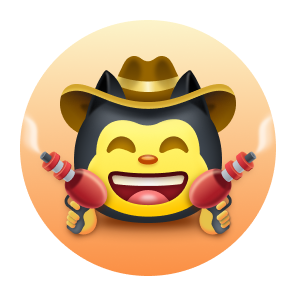Greetings. First up, here's a new game where you hurl a million 11-dimensional Monte Carlo samples at my server. I encourage you to participate:
- Open this colab notebook or script (yes there's an R version),
- Change the email, at minimum,
- Run it. Every weekend.
- Check your scores at www.monteprediction.com
The notebook also describes the scoring mechanism. Ask questions in the slack.
See
- papers, articles etc
- Medium blog
If we don't know each other yet from LI or elsewhere, I'm an applied mathematician / practitioner. I like to provoke people into using market-inspired collective mechanisms for prediction. I used the options market to effortlessly beat 97% of participants in the year-long M6 contest - see the post or article. My book is a meditation on the power of markets in a very specific yet ubiquitous domain: frequently repeated prediction. Read the awards and reviews.
Some repos here ...
The humpDay package is intended to help you choose a derivative-free optimizer for your use case.
My work on unifying Hierarchical Risk Parity with minimum variance portfolio optimization sits in the precise package although I've been meaning to put it somewhere else.

The timemachines package enumerates online methods and makes some effort to evaluate univariate methods against the corpus of time-series drawn from the microprediction platform. It is an attempt to reduce everything to relatively pure functions:
where
| Topic | Package | Elo ratings | Methods | Data sources |
|---|---|---|---|---|
| Univariate time-series | timemachines | Timeseries Elo ratings | Most popular packages (list) | microprediction streams |
| Global derivative-free optimization | humpday | Optimizer Elo ratings | Most popular packages (list) | A mix of classic and new objectives |
| Covariance, precision, correlation | precise | See notebooks | cov and portfolio lists | Stocks, electricity etc |
These packages aspire to advance online autonomous prediction in a small way, but also help me notice if anyone else does.
The winning package includes my recently published fast algorithm for inferring relative ability from win probabilities, at any scale. As explained in the paper the uses extend well beyond the pricing of quinellas!
My firstdown repo contains analysis aspiring to ruin great game of football. See Wilmott paper and for heaven's sake, don't stretch out for the first down. That's obviously nuts.
- embarrassingly - A speculative approach to robust optimization that sends impure objective functions to optimizers.
- pandemic - Ornstein-Uhlenbeck epidemic simulation (related paper)
The real-time system previously maintained by yours truly has entered a trisoloran dehydrated state but will hopefully be revived at a future date, after one of my three hundred ChatGPT generated scientific grant proposals is successful. Here's how some of the open-source stuff used to propagate down into the "algo fight club".
-
The "/skaters" provide canonical, single-line of code access to functionality drawn from packages like river, pydlm, tbats, pmdarima, statsmodels.tsa, neuralprophet, Facebook Prophet, Uber's orbit, Facebook's greykite and more.
-
The StreamSkater makes it easy to use any "skater".
-
Choices are sometimes advised by Elo ratings, but anyone can do what they want.
-
It's not too hard to use my HumpDay package for offline meta-param tweaking, et cetera.
-
It's not too hard to use my precise package for online ensembling.
Those repose are:
- The muid identifier package is explained in this video.
- microconventions captures things common to client and server, and may answer many of your more specific questions about prediction horizons, et cetera.
- rediz contains server side code. For the brave.
- There are other rats and mice like getjson, runthis and momentum.









